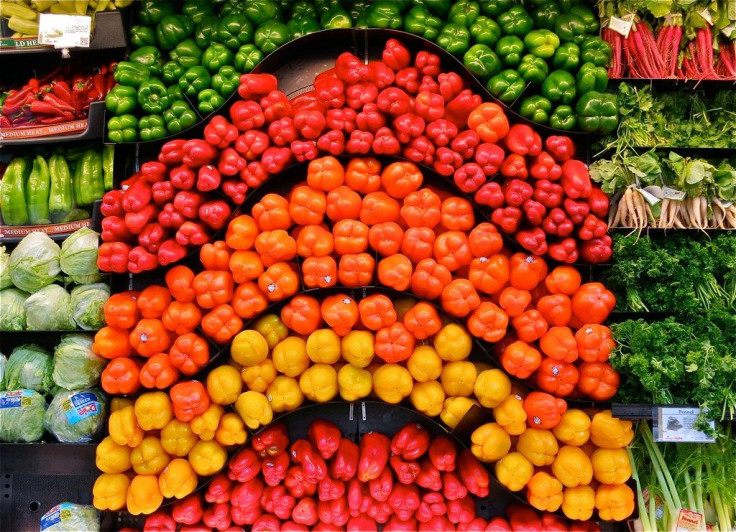Salmonella Food Poisoning Most Common In Vegetables, Not Meat

We tend to be wary when it comes to the meat or dairy products in our refrigerator, but rarely err on the side of caution when it comes to our vegetables. A report issued by the Interagency Food Safety Analytics Collaboration (IFSAC), a partnership of the U.S. Department of Agriculture, the Food and Drug Administration, and the Centers for Disease Control and Prevention, has revealed the top sources of foodborne illnesses, and it appears we have to be more vigilant in the vegetable aisle at the supermarket.
According to the CDC, 48 million people — or one out of every six Americans — suffer from a foodborne illness each year. An additional 128,000 are hospitalized and 3,000 die. Estimating illnesses, hospitalizations, and deaths caused by foodborne illnesses remains an important health practice. This is the first time all three federal agencies have combined data on food safety.
IFSAC researchers focused on the four most common and severe pathogens, including E.coli O157, Salmonella, Campylobacter, and Listeria. These four pathogens result in 1.9 million cases of foodborne illnesses in the U.S. each year. Data included around 1,000 foodborne illness outbreaks that occurred between 1998 and 2012. “The pathogens were chosen because of the frequency or severity of the illnesses they cause, and because targeted interventions can have a significant impact in reducing them,” the FDA said in a statement.
Seedy vegetables, such as tomatoes or zucchini, accounted for 18 percent of Salmonella cases compared to fruit at 12 percent, eggs at 12 percent, chicken at 10 percent, beef at nine percent, pork at eight percent, and sprouts at eight percent. Beef and vegetable row crops, like leafy vegetables, also accounted for over 80 percent of all E. coli O157 cases.
Fruit accounted for half of all Listeria illnesses, while 31 percent of cases were attributed to dairy. The number of Listeria cases attributed to fruit reflected a single large outbreak in 2011 linked to cantaloupes. Dairy also contributed to 66 percent of Campylobacter cases along with smaller percentages from chicken, seafood, and vegetables. The majority of dairy outbreaks covered by the report were due to raw milk or cheese produced from raw milk.
Attribution of foodborne illnesses is often a complicated endeavor based on how many different foods we can find at a grocery store. Tracking the source of a foodborne illness would be much easier if we ate food items one at a time. However, we generally consume an array of different ingredients in one bite. To simplify the attribution of sources of foodborne illnesses, the CDC has developed a basic list of 17 food categories based on the nature of the food source, such as fish, beef, or leafy vegetables.
Source: Foodborne Illness Source Attribution Estimates for Salmonella, Escherichia coli O157 (E. coliO157), Listeria monocytogenes (Lm), and Campylobacter using Outbreak Surveillance Data. 2015.



























